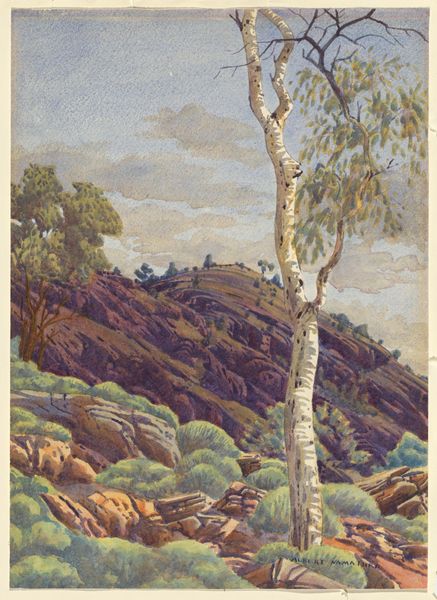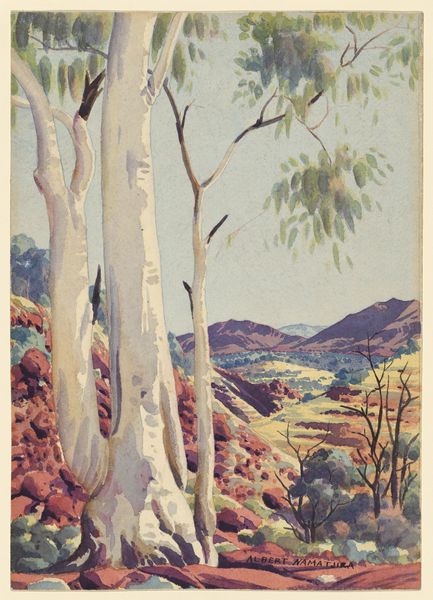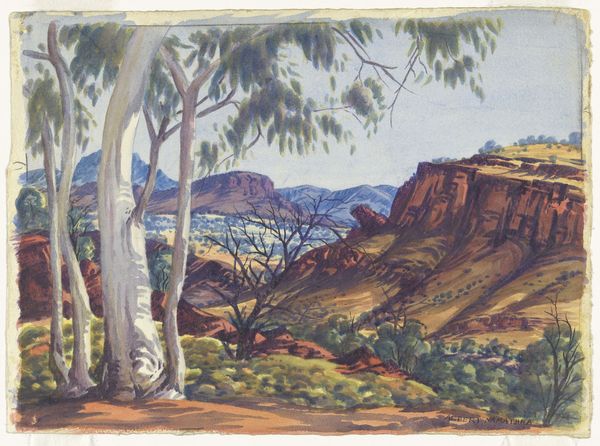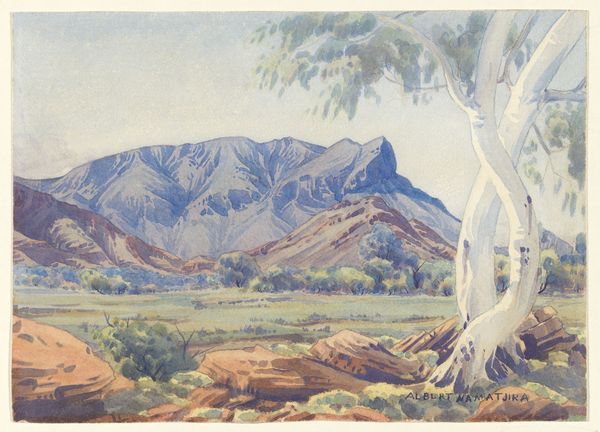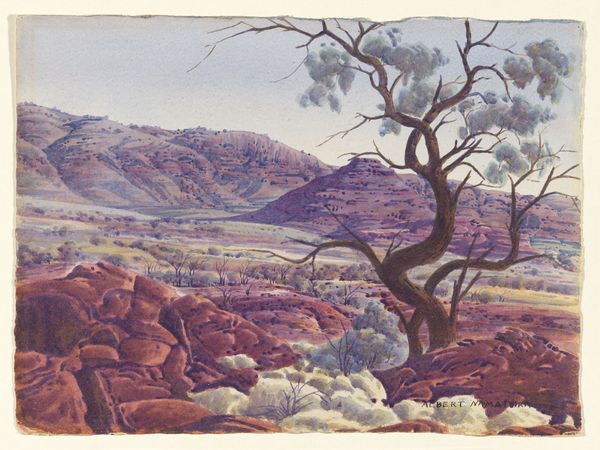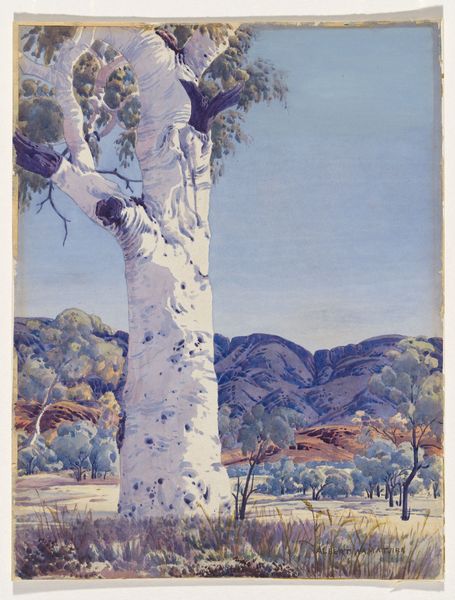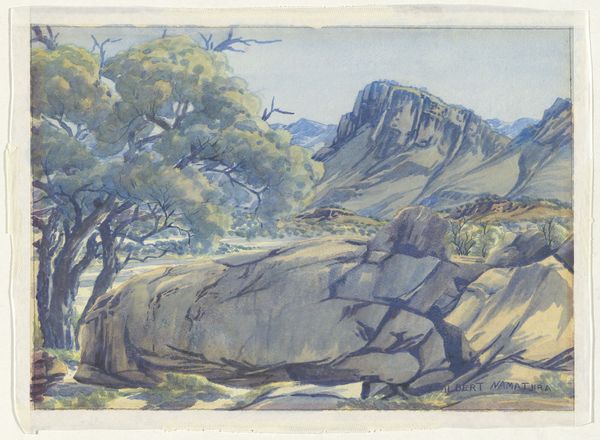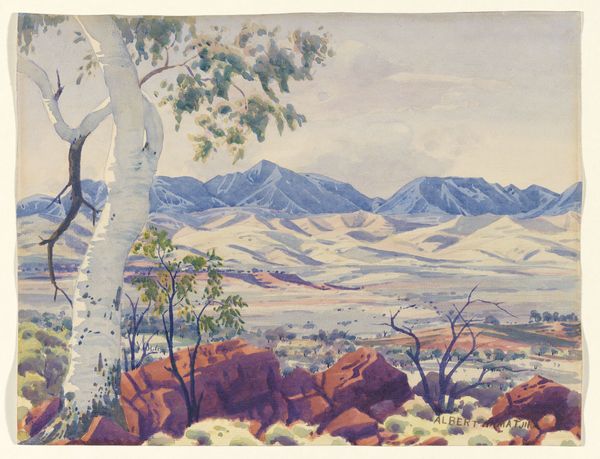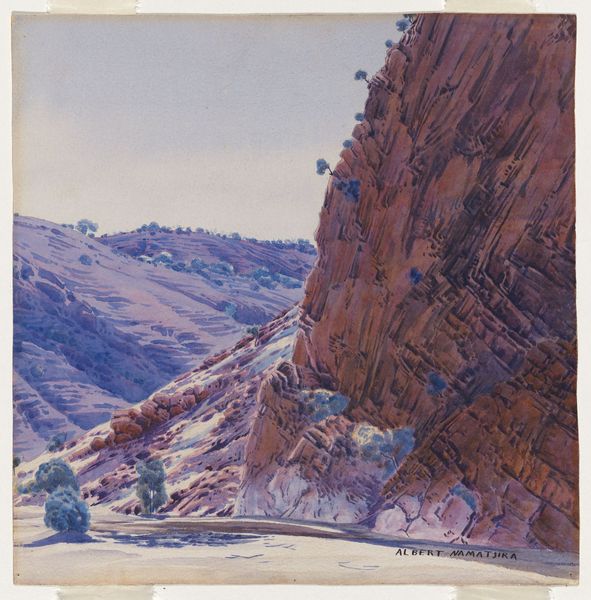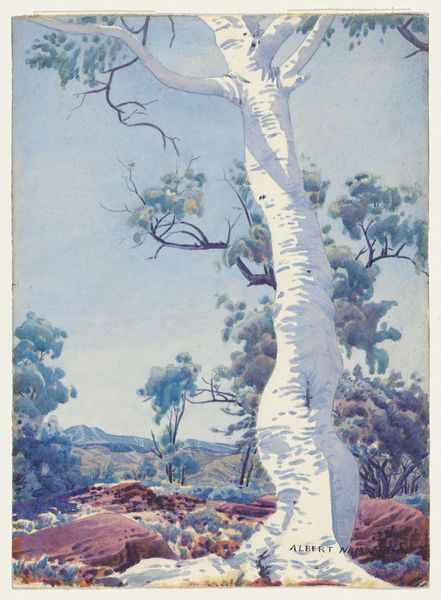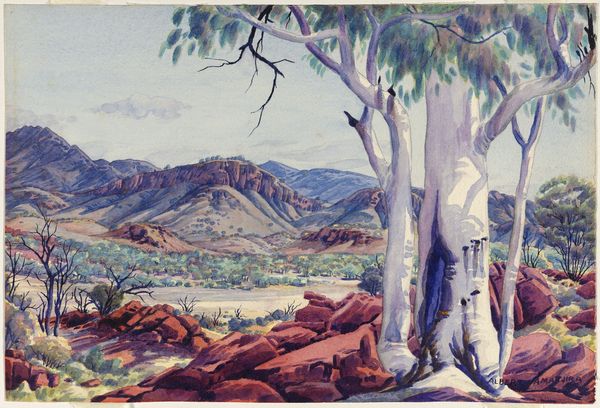
plein-air, watercolor
#
plein-air
#
landscape
#
oil painting
#
watercolor
#
naturalism
#
watercolor
#
realism
Copyright: Albert Namatjira,Fair Use
Editor: Here we have Albert Namatjira’s "Central Australian Landscape," painted in 1945. The use of watercolor gives the scene such a soft, dreamlike quality, almost like a memory. How do you interpret the significance of a landscape painting like this during that period? Curator: It's fascinating to consider this painting in its historical context. Namatjira emerged as a commercially successful artist during a time when Aboriginal people were largely excluded from mainstream Australian society. His Western-style watercolor landscapes gained popularity, and that very popularity is what raises crucial questions about the reception and consumption of Indigenous art. Editor: That's a great point. Was it considered revolutionary at the time for an Aboriginal artist to paint in a Western style? Curator: Some viewed it that way, as a bridge between cultures. Others, and this is where it becomes complex, critiqued it as conforming to a Western gaze, essentially painting landscapes that catered to what white Australians wanted to see. It raises the important issue of what expectations were placed on Aboriginal artists during this period. Was his artistic expression truly free? Editor: So the very act of painting landscapes in this way becomes a political statement in itself? Curator: Exactly. Think about who had access to land, who was depicting it, and for whom. The painting itself, a beautiful rendering of the Australian outback, operates as a complex negotiation of identity, representation, and the politics of looking. Do you notice how he used colors that would not be commonly associated to Australian outback? Editor: I do. It makes the landscape seem more inviting and approachable. Curator: Perhaps to cater to the expectations, which speaks to a powerful tension between artistic expression and cultural expectation. Editor: I never thought about landscape paintings holding so much political weight! Thanks for that perspective. Curator: It's a reminder that art doesn't exist in a vacuum. It reflects and shapes the society around it, which is true for both the artist and the audience.
Comments
No comments
Be the first to comment and join the conversation on the ultimate creative platform.
